Dubbers has a Talker. For now, this is his voice and his most valuable tool. It really is incredible…
I am not going to lie, it took a few months for my Phil and I to fully get on-board with such a device. His private Speech Therapist began PECS about 9 months prior, and he picked up rather quickly. PECS stands for Picture Exchange Communication System. It is used for children and adults, with little or no communication abilities, to communicate using pictures. Below are a couple of pictures if you are unfamiliar.
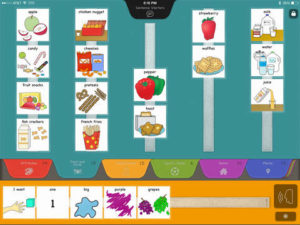

Dubbers received an AAC (Augmentative and Alternative Communication) Device when he was still in Early Intervention. His Speech Therapist at the Cody Gifford House believed this was the next step, as PECS was becoming limiting in terms of meeting his communication needs. Therefore, she wrote the justification for Dubbers to receive approval. He received his first device, almost exactly a year ago, just before his 3rd birthday and aging out of EI. The Tobii Dynavox is what was first recommended based on his “Assistive Technology Evaluation.”
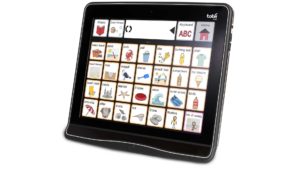
The Tobii Dynavox is about the same size as an iPad; however, slightly bulkier. The software on the device is what I describe as a “bottoms up” approach. Basically, it was up to myself or a therapist to program the various “pages” of words, phrases, etc. While Dubbers caught on pretty quickly, as he did with PECS (the pictures can be the same to help facilitate the switch); we were constantly updating, adding, and re-arranging words and images. *Please note this is based on the time Dubbers used, and their software may have changed.
When Dubbers began at his therapeutic center this past fall, they suggested after about a month of working with the Dynavox a switch in devices. The team saw the same challenges as I mentioned above with the constant updates, as well as how “personal” the organization could be in terms of each page. I may organize a page completely different then how the Speech Therapist may organize. So, it was very subjective. They historically worked more with an app called, Speak For Yourself (SFY), and therefore, recommended this for Dubbers. I purchased an iPad ($399) and the app ($199.99) online and was very easy and significantly less expensive than if you were to purchase a Tobii Dynavox (unless you are fortunate to receive thru EI).


At first glance, SFY looks very complicated and intimidating; however, the thought process behind this program encompasses motor planning principles as well. For example, when you step in an elevator you have in your mind what floor you are going to and can quickly press the correct floor without really thinking about it. However, when another person gets in the elevator and requests you to press their floor as well, suddenly you find yourself scanning the grid of numbers for their requested floor and you must re-think, “where is that number?” The idea is that a child like Dubbers, will learn to think about SFY in the way we think about elevator buttons or our iPhone home screen and that it will become second-nature for him to “speak.”
SFY also comes pre-programmed and is more of a top-down approach. The words are all there. They have a set place they will “live” and based on the level of use, you are able to “hide” words that are not needed or unknown. Then as words are discovered by Dubbers, we can un-hide and show him where it lives. There is also the ability to customize pictures with your own photos or images (as is true with the Dynavox).
It did take Dubbers some time to adjust to the new format of SFY versus the Tobii Dynavox; however, it has been the right move and less than six months since first starting, he is constantly building his vocabulary, requesting his desires and answering questions. It takes A LOT of work, from all involved (parents, teachers, therapists), but is so well worth it!
Below are helpful links relating to this post:

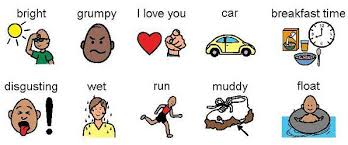
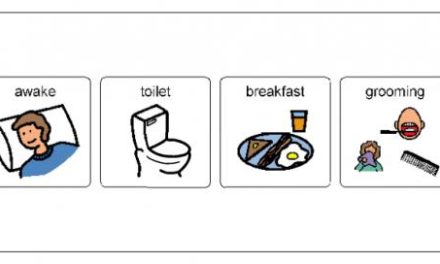

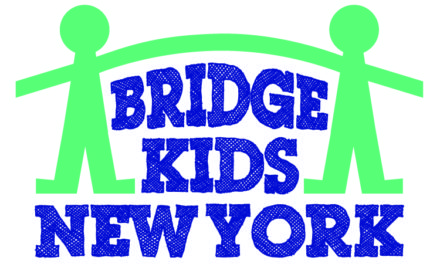

Hello Eve, Thank you for sharing the great and detailed information. I am curious to know more about the decision to start using devices with Dubbers. If you don’t mind sharing, can you please shed some light on when should parents start thinking about augmenting with a device.
Once Dubbers became comfortable with PECS and needed something more advanced, we decided to move on to a device. One of his speech therapists also strongly encouraged it. In order for a child to be able to use a device; however, he/she does need to have an understanding of language first. Let me know if you have any more questions. Thanks!